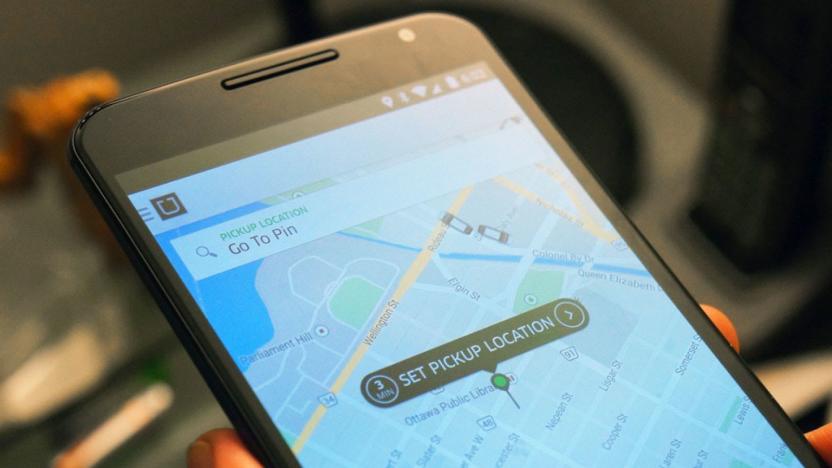texasam
Latest

Amazon's Alexa Fellowship expands to 14 more universities
Amazon is eager to get more bright minds working on voice technology, so it's expanding the Alexa Fellowship program to 14 more universities, including Massachusetts Institute of Technology, Texas A&M and Cambridge. The fellowships are financed through Amazon's $200 million Alexa Fund.

Car ownership could decline thanks to Uber and Lyft
While it may seem logical that people will own fewer cars as ride-hailing services like Lyft and Uber gain more traction, there hasn't been a way to study any potential effect. Then Uber and Lyft left Austin, Texas for about a year. A group of researchers from University of Michigan Transportation Research Institute (UMTRI), Texas A&M Transportation Institute, and Columbia University found that the presence of ride-sharing companies can change car ownership behavior, which could eventually lead to fewer personal cars in the future.

Researchers find coral reefs in a place they shouldn’t exist
While the waters of the North Atlantic and South Pacific tend to have what hard corals need to survive, the North Pacific doesn't, and it has been thought that deep-sea coral reefs were a near impossibility in that part of the ocean. But researchers at Florida State University and Texas A&M University have discovered a few reefs in the North Pacific that don't seem to be following the rules. Their findings were recently published in Scientific Reports.

Hydrogel injections could increase wounded soldier survival rates
If a team of researchers from MIT and Texas A&M University have their way, wounded soldiers will have soon have a better chance of survival. The project is a biodegradable gelatin that once injected, helps with blood coagulation, cutting down on blood loss internally. In some trials, the hydrogel decreased the time it took for the blood to clot by 77 percent after it maneuvered into position. The medical solution is still in the testing phase, but once its perfected, researchers hope to see soldiers add preloaded syringes packed with the material to their gear arsenals. [Image credit: Behrouz Mehri/AFP/Getty Images]

Scientists want to fight the Ebola outbreak using robots
Outbreaks of lethal viruses like Ebola are bad enough by themselves, but they're made worse by having to send in aid workers -- these people can quickly become victims, no matter how careful they are. To eliminate that risk, both the White House and a trio of educational institutions are holding workshops on November 7th where scientists will discuss using robots to tackle the current Ebola crisis. The goal is to minimize physical contact whenever possible while keeping patients and families in touch. At a basic level, they'd like machines to disinfect areas and deliver supplies. Telepresence robots, meanwhile, could both let people visit patients without putting themselves in danger.

If you're part of the 'younger set with high income,' you might like this purple potato
Potato breeding programs at Michigan State University and Texas A&M have been churning out modified spuds for the better part of a decade, if not longer, but thanks to A&M's Creighton Miller, we now have a better idea of the 'designer' potato's target market. "What we're doing now is developing unique varieties that appeal to the younger set that is high-income that are willing to try something different," he explained in an interview with AgriLife Today, holding a variety of product, including a "gourmet" potato sporting "red flesh with splashes of yellow." Michigan State's program, meanwhile, has developed a variety called "Raspberry." According to a report in Txchnologist, that potato has vibrant red flesh and a skin that's flavored like the fruit. You might get a good feel for how it tastes by taking a bite while it's still garden-fresh, but that particular potato, along with another simply referred to as "MSQ558-2RR," are likely destined to end their lives as thin-cut chips. De-licious. [Photo credit: Texas A&M AgriLife Communications]

AMBER robot walks on human-like feet but isn't quite ready for British Knights
Until recently, bipedal robots have sometimes had to take interesting approaches to imitate human walking because they lack our first points of contact with the road: heels and toes. The latest breakthrough from Texas A&M's Amber Lab robotics team may have fixed that, though. An approximation of those foot bones grants the robo-Manziel the pivot-points necessary for (somewhat) naturalistic locomotion. However, this advancement doesn't do nearly as much in terms of making the synthetic legs any stronger. Near the end of the embedded video, the disembodied legs stumble and fall to show that the attached boom isn't supporting their weight. This is great news for us meatbags, because it makes 2029 feel that much further away. Update: We received word from Texas A&M Amber Lab's Aaron Ames that the robot in fact supports its weight throughout the entire demo, and that the team purposely made it fall to show that the attached boom only provides lateral stability.

ZeroTouch 'optical multi-touch force field' makes a touchscreen out of just about anything
The rise of tablets and smartphones has made the touchscreen a rather ubiquitous interface, but they aren't everywhere quite yet. A group of students from Texas A&M intend to change that, however, with the invention of ZeroTouch: a seemingly empty picture frame that lets you turn any surface into an interactive touchscreen. It might not look like much, but ZeroTouch is packing a series of pulsing LEDs and infrared sensors that turn that blank space into a highly sensitive surface. Basically, the strategically placed LEDs cover the open area in a sheet of invisible light. When a hand or stylus enters the picture (or lack there of), those beams are interrupted, providing cues to a piece of software that tracks the object's movement -- and boom! You've got a touchscreen. Of course, this isn't the sort of thing that's going to make it to market anytime soon, but you can check out ZeroTouch rocking the rippling water effect in the video below.

Robots perform in 'A Midsummer Night's Dream,' said to outdo the cast of New Moon
Shakespeare's plays have a long, long history of being modded to fit the times. We've seen Macbeths do the running man, and Cordelias dressed like Susie Sioux -- and we've also seen Forbidden Planet, so we know that Robby was just a tinned up Ariel. So robots in Shakespeare? Sure, we've seen that before, but what haven't we seen intertwined into bad theatre? Well, Texas A&M's just staged A Midsummer Night's Dream to include robotic cast members. Working with Professor Robin Murphy, who heads up the Center for Robot-Assisted Search and Rescue, director Amy Hopper hacked the script a bit to include an air robot -- which is about the size of a pizza, and has been used in military operations -- playing a fairy, and six small radio controlled helicopters. The robotics team used the opportunity to observe how cast and audience members reacted to the robots, and we're pretty sure the audience warmed to them far more quickly than they would to Christian Bale or Sean Penn.







